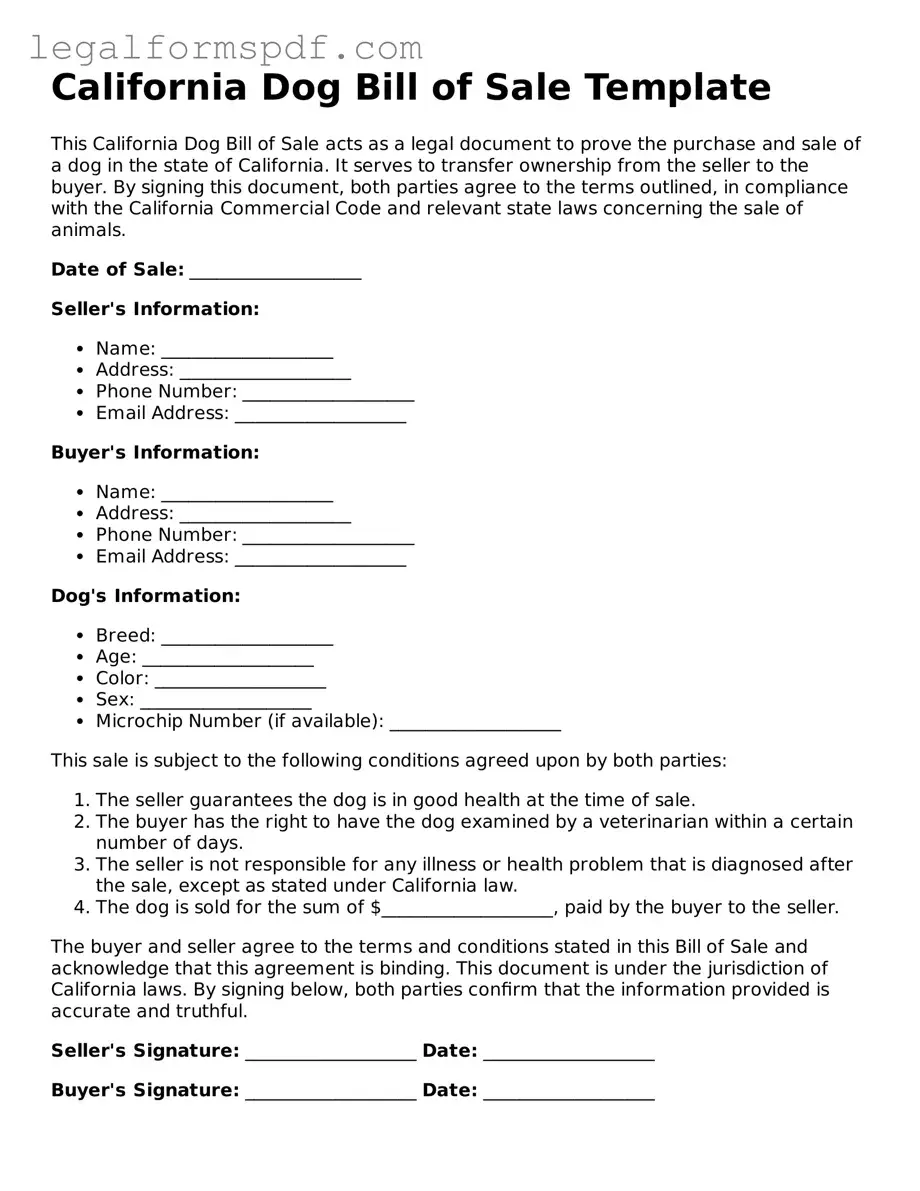The California Dog Bill of Sale form is akin to the Vehicle Bill of Sale form. Both documents function as a legal transaction record, detailing the transfer of ownership from one party to another. Each form captures essential information such as the buyer and seller's names, the sale date, and the item's description, whether it's a beloved pet or a car. This ensures a smooth transfer process, providing a receipt for the transaction.
Similarly, the Equipment Bill of Sale form shares a lot in common with the Dog Bill of Sale form. These documents are used to record transactions, offering buyers and sellers legal protection. The Equipment Bill of Sale helps in transferring ownership of machinery or tools, specifying the item's condition, just like the Dog Bill of Sale specifies the health and vaccination details of the dog. This is crucial for transparency and accountability in the transaction.
The Boat Bill of Sale form is another document that parallels the Dog Bill of Sale. Both serve as evidence of a sale and purchase transaction, requiring detailed descriptions of the item being sold (a boat in one case and a dog in the other) and including the price and the parties' contact information. These details are vital for the registration and licensing processes that may follow the transaction.
The Firearm Bill of Sale form also bears resemblance to the Dog Bill of Sale, as both are pivotal for documenting the transfer of ownership of items that require a high level of responsibility and care. The Firearm Bill of Sale, like the Dog Bill of Sale, outlines specific details about the item sold, including serial numbers or breed specifics, and the terms of the sale, ensuring both buyer and seller are clear on their obligations and the item’s condition.
Similarly, the Horse Bill of Sale form and the Dog Bill of Sale document the transfer of live animals, emphasizing the importance of stating the animal's health status and any other relevant details that affect its value. Both forms serve to protect the rights of the buyer and seller, making any future claims or disputes easier to resolve by providing a solid transaction record.
Another comparable document is the Real Estate Bill of Sale, which, although used for the sale of property, aligns with the Dog Bill of Sale in its function as a proof of transaction. Both forms detail the agreement terms, identify the parties involved, and specify the item being sold, ensuring the transfer is legally binding and clear to all parties.
The Business Bill of Sale form, much like the Dog Bill of Sale, records the sale of assets and is essential for the buyer’s legal protection. This form ensures that the buyer receives rightful ownership of the business assets, similar to how the Dog Bill of Sale confirms the transfer of pet ownership. Both documents are crucial for the seamless continuation of operations or companionship.
The Mobile Home Bill of Sale form is another document sharing similarities with the Dog Bill of Sale, as they both document ownership transfer of a valuable asset. It details the mobile home's condition and specifics, parallel to how the Dog Bill of Sale lists the dog’s breed, health, and vaccination records, ensuring buyers are fully informed.
Lastly, the General Bill of Sale form, which is versatile and applicable to various types of personal property sales, relates closely to the Dog Bill of Sale. Both forms serve the overarching purpose of documenting the sale and protecting the legal rights of the buyer and seller by providing a comprehensive record of the transaction’s details, terms, and conditions.
